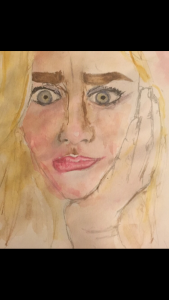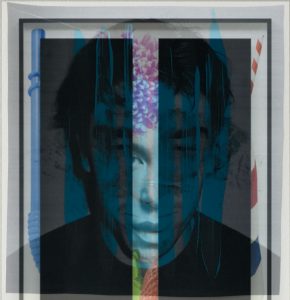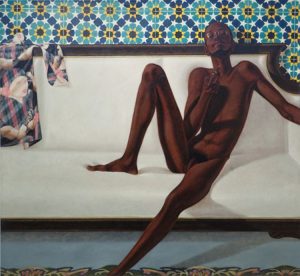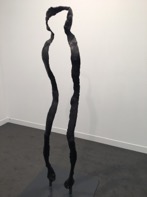Text 1
Leo Steinberg (July 9th 1920- March 13th 2011). This text predominantly focuses on the classic work by Steinberg Other Criteria which consists of 18 essays on various discussions”. It also compares and dissects work by Pollock, (January 28 1912-August 11 1956), and many other famous artists. It is based upon Steinberg’s opinions from his perspective as an art historian.
Leo Sternberg was a Russian born American art critic and historian. Steinberg discusses inparticular the concept of the flatbed picture plane, defined as a horizontal bed on which a horizontal printing surface rests. It attempts to explain the way in which we paint vertically but that a picture can be viewed just as acceptable from a horizontal view. Pollock demonstrates this concept brilliantly by initially dripping paint whilst the canvas is horizontal on the floor and then lifts the canvas to the wall to allow the dripping of paint.
Something happened in 1950 which linked with this idea of moving art pieces around, why can’t a rug be viewed upon a wall or why can’t a story be recreated in a mosaic tiles. Artwork displayed in this way can be found in many churches and cathedrals.
Text 2
Richard Serra (1939).
This text relies heavily on opinions and analysis of the work of Richard Serra (1939). Serra was born in San Francisco California and is an American Sculptor best known for large scale steel abstract sculptures.
The work “Titled Arc” (1981) by Serra is discussed and references are made about it and how it has influenced industrial steel works. (Brenson, 1985). Serra is adamant that it is a sculpture and that to remove it would destroy it. But when he tried to appeal against its destruction he failed and during the night it was cut into three pieces and removed.
Titled arc was a very controversial piece of public art in the centre of New York. It was displayed between 1981 and 1989 in Foley federal Plaza. The installation was a 120 feet long and 12 feet high solid unfinished plate of rust covered COR-TEN steel.
It created a very acrimonious debate. (Glueck, 1981).
When comparing these texts I considered my thought towards the text and the points discussed. I found the main difference between them was that text 1 was more about art history and theory. It discussed a lot of artworks by many famous artists.
Text 2 was more modern, commercial and to do with steel installations, large constructions, needed for such projects. It was interesting because it is not an area of art that I have really thought about. (Harrison and Wood, 2003).
Bibliography
Brenson, Michael (1985) “Art View”. The Case in Favor of a controversial Sculpture. The New York Times. May 19.
Glueck, Grace (1981). An Outdoor Sculpture Safari Around New York. The New York Times. August 7th.
Harrison, Charles and Wood Paul (2003). Art in Theory 1900-2000). Wiley-Blackwell








